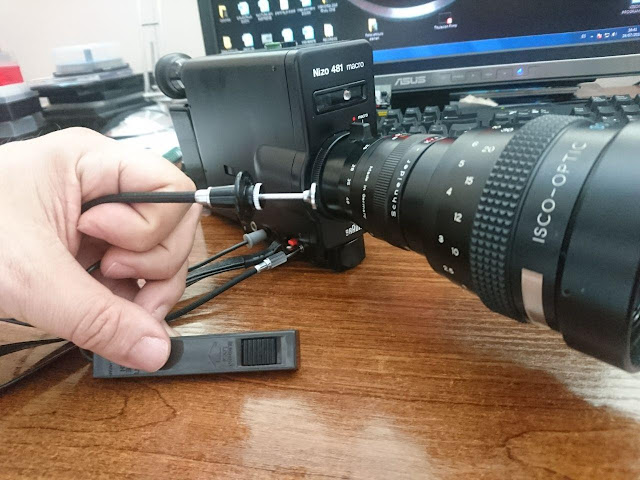(link a la versión en español al final)
Nizo, the legendary German film company founded in 1925 (Niezoldi & Krämer GmbH), went down in history for having produced the only Super-8 camera exhibited at the MoMA in New York, the Nizo S80, the magnum opus of the legendary Dieter Rams, designer of the company between 1961 and 1995.
The S80, with minimal variations, is the one that gave rise to the 481, 561, 801 and Professional range, with basically the same body, and which differ only by their lens.
Rams design, discernible on all Braun products, was admired by Steve Jobs and served as the inspiration for McInstosh / Apple products. Steve Jobs, as a super-8 user himself, filmed with the Braun Nizo Professional (like Commander Custeau or the explorer Thor Heyerdhal), whose lens, made by Schneider with Schott glass, benefits from the T multi-coating (developed for NASA).
The Professional also does not need separate mercury batteries for the built-in Gossen photometer, but this is something that the wonderful French-Spanish technician André Egido, from Cine-super8.net, can fix on all models today, as it did in my 481.
 |
| Añadi |
BRAUN NIZO 481 MACRO BLACK FOR CINEMASCOPE
All models in this series have silver alloy body panels, with the exception of a few units that were manufactured in black.
One of my favorites, because of its light weight, is the 481 Macro in its rare black version, since I can use it with an Isco Scoptimax anamorphic (marketed at the time by Dietrich Kempsky) without the need for an intermediate ring: this x2 CinemaScope lens It screws directly onto the 481's Schneider Variogon lens, a convenient feature for "lone wolf" filmmakers like one who not only write the script, edit and sound it, but undertake filming tasks alone, without assistance.
INTERVALTIMER.
The 481, like the other models in the series, among other technical features (variable shutter, lap dissolve, etc.), has a built-in intervaltimer. As the instructions for its use come in German, few English-speaking users take advantage of this useful feature. Next, as a tutorial, we will describe "how to do it", so that a timelapse in Super-8 is available even to people who come from the digital underworld.
STEP ONE: RELEASE CABLE.
In these models, the number one point is to get a trigger cable, which can be mechanical or electromagnetic: one of the two must be connected to its corresponding socket and left in the "activated" position.
SECOND STEP: BUTTON MARKED AS "TIMER".
This circular knob is normally locked in the orange dot. To use the intervalometer, the operator needs to move it to the graduated sector, as seen in the photograph immediately above: this scale allows the built-in intervaltimer to be varied between 6 frames per second and 1 frame every twenty seconds.
STEP THREE: TURN-ON THE CAMERA.
After framing the subject of the picture, the camera operator only has to decide whether to film with an automatic or manual photometer, and, finally, activate the main release switch.
The only precaution to follow is that, when filming with an intervaltimer, and automatic exposure, a set of batteries will only last about 3 or 4 cartridges.
LONG EXPOSURE DEVICE.
This ingenious mechanism allows you to film static objects (for example, in the twilight of a church or a landscape in the light of the full moon), with low-sensitivity film, without the need for artificial lighting.
STEP ONE: RELEASE CABLE.
As with intervalTIMER footage, the camera must have a trigger cable attached and in the operating position (either mechanical or electromagnetic).
SECOND STEP: POSITION B.
The rotary knob that regulates the intervaltimer must be moved to the "autom.B" position, as can be seen in the photo.
STEP THREE: LOCKING THE VARIABLE SHUTTER.
The orange variable shutter lever must be fixed, as shown in the photograph, fully to the right, after pressing a small button marked "B".
Then, if the camera is ready and on its tripod, it only remains to switch on.
For better meter precision, the Braun Nizo measure these types of long exposure shots not with the Gossen meter behind the lens, but with another one immediately above it.
Note: I thank to my friend Jamie Frazer, English director based in Sweden, for the Truth Revealed



No hay comentarios:
Publicar un comentario